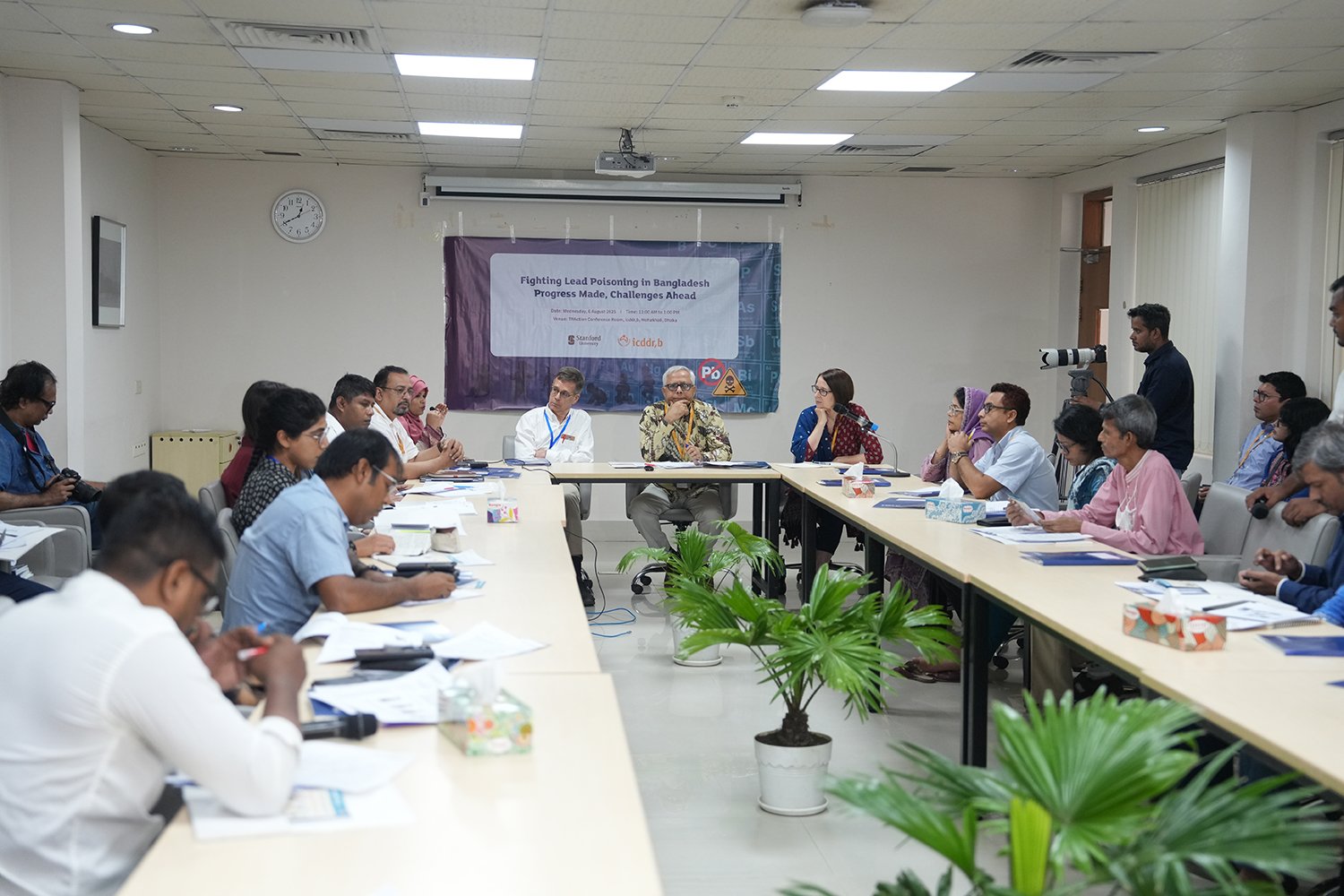News Flash
News Flash

DHAKA, Aug 6, 2025 (BSS) - The icddr,b organised a discussion titled
"Fighting Lead Poisoning in Bangladesh - Progress Made, Challenges Ahead"
here today to draw attention to the widespread and preventable risks of lead
exposure in the country and explore strategies for urgent intervention.
The event opened with a welcome address and an overview of icddr,b's lead
prevention initiatives by Dr. Sarah Salway, senior director of the Health
Systems and Population Studies Division (HSPSD).
She emphasized that lead exposure remains a serious but often overlooked
public health threat in Bangladesh, particularly affecting children living
near polluting industries.
Lead, a toxic heavy metal, has been silently harming the health of millions,
especially young children and pregnant women.
There is no safe level of lead in the blood, but the US Centers for Disease
Control and Prevention (CDC) considers blood lead levels above 35 µg/L
(micrograms per liter) to be a cause for concern, especially in young children.
According to UNICEF, Bangladesh is now the fourth most lead-impacted country
globally, with 36 million children suffering from elevated blood lead levels.
Research presented at the event revealed that in Dhaka slums from 2009-2012,
87 percent of children under two had blood lead levels > 50 µg/L, are strongly
associated with stunting.
Steve Luby, professor of Medicine at Stanford University and a former
Director at icddr,b highlighted how lead exposure severely impairs brain
development, causing IQ loss and cognitive deficits that can permanently
affect future generations.
He said, "Lead enters the body in multiple ways, through the air we breathe,
the food we eat, contact with contaminated soil or dust, and even during
pregnancy through the placenta. These exposure pathways make it nearly
impossible to avoid unless we address the root causes in our environment,
especially those we have the ability to manage and control."
Dr Md. Mahbubur Rahman, project coordinator at icddr,b, presented findings
from a decade of lead-related research.
It was noted that common sources of lead exposure include pollution from
lead- and battery-related industries, lead-based paints, and consumer goods
like cosmetics and cookware.
One of the most impactful interventions to date has been targeting turmeric
adulteration (polished with lead chromate).
In his closing remarks, Dr Tahmeed Ahmed, executive director of the icddr,b,
emphasised the stakes: "Lead poisoning silently steals our children's
potential, damaging their brain development and nutritional status, with
consequences that will hold back Bangladesh's future."
"We must act decisively to eliminate these sources of exposure so that every
child can grow up healthy, smart, and ready to contribute to our nation," he
added.
A good number of participants included journalists and researchers from
icddr,b and Stanford University were present at the event.
The discussion concluded with a shared commitment to accelerate action,
ensuring a healthier and brighter future for Bangladesh's children.